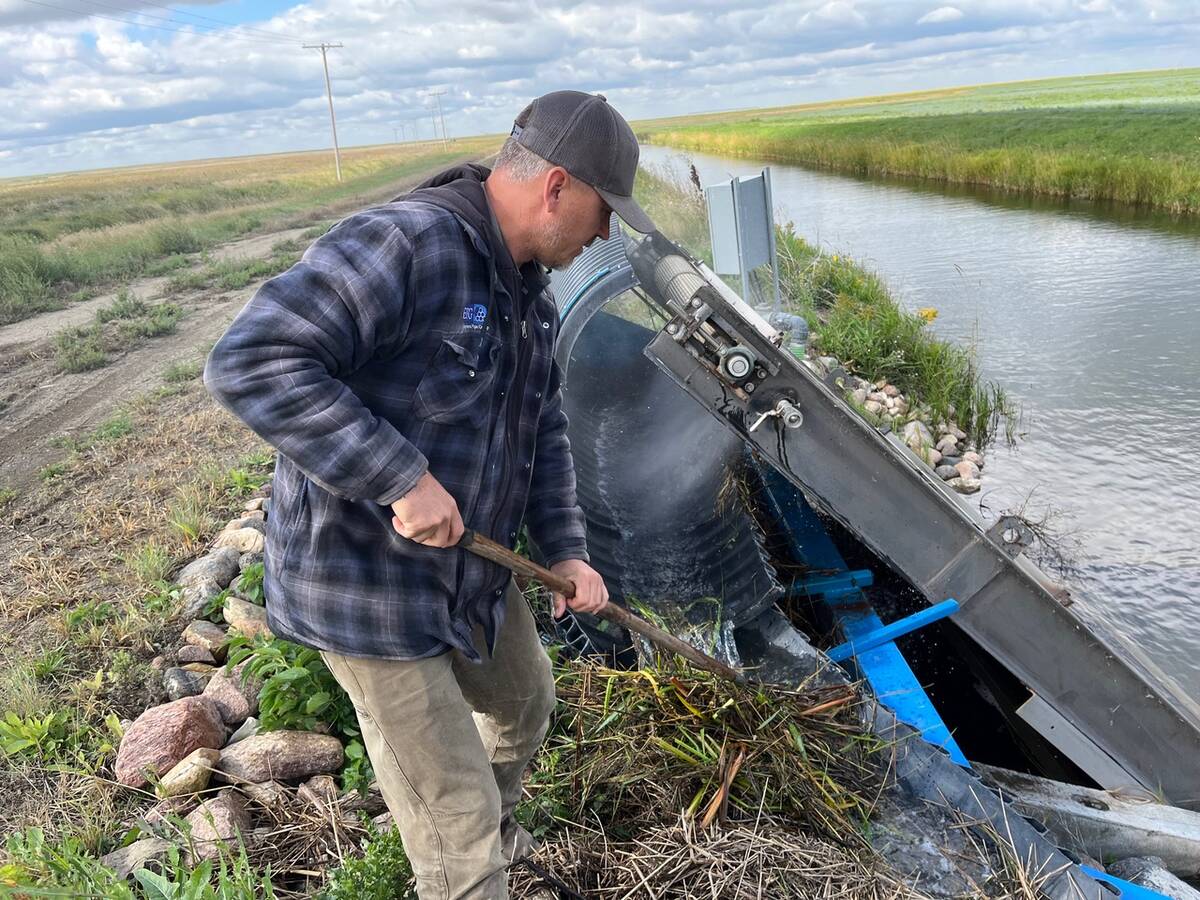MacGREGOR, Man. – A touch of fate, a dash of ambition and a sprinkle of persistence. Those were some of the ingredients that gave rise to Triple R Limousin in central Manitoba.
Owners Art and Maria Rodgers started from scratch and gradually built up a farm that features a large herd of purebred Limousins as well as commercial cattle.
The events that inspired Triple R Limousin began in Lavenham, a small community in central Manitoba. It was there that Art and Maria settled after they married.
Read Also

Saskatchewan farmer uses tile drainage to manage water
The integration of both irrigation and tile drainage results in higher yields, water efficiency, improved soils and less nutrient runoff, says one producer.
While living in Lavenham, Art worked for Hartley Woodward, an established purebred Limousin breeder, while Maria worked as community postmaster.
The Rodgers bought a few cattle as a sideline to earn extra income. The cattle were pastured on a road allowance and an abandoned railway within town limits.
Seven years into their marriage, fate started to nudge the Rodgers away from town and onto the farm where they now live.
Not everyone in Lavenham was keen on having cattle pastured within town limits. Those opposed to the bovine residents began to hint they wanted the cattle moved.
And the Limousin breeder that employed Art retired in 1988. Art had no job prospects and that left him with some obvious choices – go into farming or go elsewhere in search of a job.
He decided to farm.
The Rodgers bought a quarter section of land with a home and farm buildings in 1988. By then, they had three young daughters. They owned a few commercial cows and 10 purebred Limousins purchased from Art’s former employer.
The quarter section and the Limousin cattle became the foundation for their farm future. The Rodgers’ three daughters, Karis, Rochelle and Larissa, became the inspiration for the farm’s name, Triple R Limousin.
The Rodgers went on to buy another quarter section of land and increased their Limousin herd. They gained a reputation for quality breeding stock, but not without some challenges.
“I wanted more cows,” Art remembers, “but you couldn’t always raise enough to have enough, so I was always buying more. Some of those cattle didn’t always work out.
“I came to the conclusion that the best cattle you can have are the ones you raise yourself because you know their history.”
Awards pile up
The Rodgers now have boxes filled with trophies won at cattle shows. They have dozens of banners and cloth-backed chairs for the times their Limousins were named grand champions or reserve grand champions at exhibitions.
“I told Maria I was going to quit showing when I got 20 (banners) but it kind of gets in the bloodline after a while,” said Art, a robust man packed with enthusiasm for what he does.
The thrill of winning the awards has softened with time. But by showing their cattle, the Rodgers gained the exposure needed to sell breeding stock.
Maria said they enjoy the friendships cultivated from attending exhibitions, including the Canadian Western Agribition and the Brandon Fall Fair. For her, cattle shows are one of the highlights of the year. Maria oversees the fitting while the girls help with grooming and showing the cattle.
Art talks with prospective buyers who want to know more about Triple R’s breeding stock. He’s a gregarious man who likes nothing better than talking about cattle – especially if those being talked about are Limousins.
“You need one guy doing the PR work,” he said over a cup of coffee at the family’s home. “You’ve got to be out there selling your product.”
The Rodgers began selling embryos from their Limousin herd seven years ago. The embryos offer the genetics of their top cows crossed with one of their herd bulls or an AI sire. Art and Maria began selling semen from their bulls in 1995.
Demand for the genetics of their herd has come from across Canada as well as South America.
Helpful hand
The Rodgers are helped at the shows and at their farm by Chris Moore, the son of an area farmer. Art and Maria are reluctant to describe Chris as hired help since he is like a member of the family.
There is seldom a spare moment at the Rodgers farm. Besides the cattle, they rent a section of land to grow crops.
As well, Maria does home care and has a local mail route.
Their spare time is trimmed even shorter by volunteer commitments.
Maria was a director with the Manitoba Limousin Association for three years. When she stepped off the board, Art stepped on and he is now midway through a three-year term.
They both are leaders for the local 4-H club, Mix and Match. Maria and Art coach 4-H beef club members in grooming and showmanship.
Art also has been judging at cattle shows in Manitoba for the past three years and serves as president of the local agricultural society.
In the future, Art wants to expand one of their barns so they can hold production sales. He also is building a new calving facility that will double as a show barn.
However, one never knows where fate and ambition might lead them. Lingering in the back of Art’s mind is a desire to move to Alberta.
“It’ll probably never happen,” he said, “but … “
















